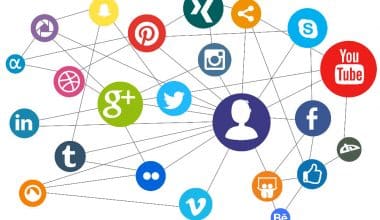I was chatting with a friend the other day about how rapidly the field of public relations (PR) is evolving. It’s fascinating to see how emerging PR trends are reshaping the landscape, making it more dynamic and, frankly, more exciting than ever before.
For instance, digital technology has revolutionized how we engage with audiences, bringing about previously unimaginable interaction. One experience that stood out for me and highlighted the impact of these trends was when I worked on a campaign that fully leveraged social media analytics.
Initially, we followed the traditional PR playbook, but the results were not cutting it. So, we decided to pivot and implement a data-driven strategy, analyzing audience behavior and tailoring our content accordingly. The turnaround was incredible not only did we see a significant uptick in engagement, but the campaign’s overall reach exceeded our expectations.
How can you leverage these insights to stay at the forefront of your industry and create unforgettable experiences? I would love to share 15 emerging PR trends in this article to help you elevate your strategies. Let’s get started!
Key Points
- AI content generation is becoming a pivotal trend in PR, offering innovative content creation and idea-generation tools.
- The adoption of a data-driven approach in PR strategies is underscored, highlighting the importance of analytics in enhancing engagement and campaign performance.
- The significance of social media platforms is growing, with Twitter, LinkedIn, and TikTok becoming key channels for PR professionals to showcase expertise and build connections.
- Digital technology’s impact on audience engagement is notable. It has revolutionized how audiences are reached and interacted with.
What are Trends in PR?
Trends in public relations (PR) are patterns or shifts in industry practices and strategies that reflect how brands and organizations communicate with the public, media, and stakeholders. These trends often evolve in response to technological advancements, changes in consumer behavior, and broader societal shifts.
Staying abreast of these trends is crucial for PR professionals to effectively manage their brand’s reputation, engage with their audience, and navigate the ever-changing media landscape.
What Are the Latest Emerging Trends in PR?
Here are 15 intriguing PR trends to watch out for now:
Right now, one of the hottest trends in public relations is undoubtedly the integration of artificial intelligence (AI) and machine learning. This isn’t just about automating routine tasks or sifting through data at an unprecedented scale; it’s about transforming how we understand and engage with our audiences. Check out these trends:
#1. AI content Generation (36%)

Credit: Freepik
The most talked-about trend in the world of PR right now is AI-generated content. Unsurprisingly, this trend has emerged as one of the top emerging trends in PR. Initially, there was widespread concern about the potential threat of robots and artificial intelligence replacing human jobs. However, these concerns have proven to be more fiction than reality within public relations.
Diving into why 36% of respondents have singled out this trend as their primary prediction, AI content creation tools are incredibly beneficial for brainstorming, generating innovative ideas, crafting new story angles, and overcoming writer’s block. Furthermore, their widespread appeal can be attributed to their user-friendly interfaces, easy accessibility, and minimal learning curve. These factors combined make AI content creation tools highly attractive to PR professionals.
#2. Data-driven PR
Have you ever noticed how relying on your gut feeling gets better with more experience? However, when fine-tuning your approach, isn’t it reassuring to have solid data to support your strategy? A recent PR Trends Report highlighted that adopting a data-driven approach in public relations is becoming increasingly important. 17.5% of the surveyed believe leveraging quantifiable data can significantly enhance their results.
But how does one integrate this data into their strategy? It involves keeping a close eye on brand mentions across various platforms, meticulously analyzing the performance of your campaigns, and measuring the outcomes with precision. This lets you adjust your tactics in real time and ensures that your decisions are grounded in reality. By doing so, you’re building stronger connections with your target audience and tailoring your efforts to meet their specific needs more effectively.
Moreover, isn’t it true that convincing stakeholders or clients to allocate better budgets becomes a smoother ride when you have concrete evidence of your success? This can significantly bolster your brand’s visibility in the media landscape.
#3. Social Media Growth

Credit: Freepik
Why do you think platforms like Twitter, LinkedIn, and TikTok will remain crucial for professionals, especially those in public relations and marketing? It’s fascinating to observe how these social networks are increasingly becoming the go-to spaces for showcasing expertise and building meaningful connections, whether with the media or potential customers. Traditionally, the spotlight was on securing coverage in prestigious publications like the Financial Times or the Wall Street Journal. But it seems there’s a significant shift on the horizon, with social media platforms becoming indispensable tools in a PR strategist’s arsenal.
This evolution in strategy is particularly noticeable among PR professionals who adeptly navigate both traditional media landscapes and the dynamic world of social media. They’re beginning to leverage these platforms not just for supplementary visibility but as primary channels for engagement and thought leadership. Specifically, for someone in PR aiming to tap into fresh audiences, Twitter stands out as a goldmine. It’s a platform where journalists, writers, and content creators actively seek new stories and sources, more so now with the platform undergoing transformative changes under Elon Musk’s leadership.
How do you see these developments influencing your approach to PR and content strategy? Do you think the emphasis on social media engagement over traditional media coverage will continue to grow, and how are you preparing to adapt to this shift?
#4. AI and Predictive Analysis: The new PR playbook
Incorporating artificial intelligence (AI) and predictive analytics into public relations strategies is like unlocking a new level in a game. It is a game-changer. Nowadays, PR agencies are getting savvy, using these innovative technologies to get a sneak peek into future media trends, spot potential news stories, and figure out which journalists and media platforms might be most interested in their stories. This approach isn’t just throwing darts in the dark; it’s about making sure your message lands in the right hands, capturing attention, and making a real impact. This method leads to a steady stream of meaningful media appearances that resonate with the target audience.
Let me break this down a bit with an everyday analogy. Imagine if you had a crystal ball that could predict which coffee shop in town would be the least crowded every morning, allowing you to get your coffee fix without the wait. That’s kind of what AI and predictive analytics do for PR professionals—they help them see where the opportunities are before they become obvious to everyone else.

Here’s how this futuristic approach plays out in practice:
- AI-Powered Media Landscape Analysis: Think of this as creating a detailed map of the media world. By sifting through thousands of articles, social media posts, and what’s currently buzzing, this analysis spots trends, hot topics, and who’s leading the conversation. It’s like having a bird ‘ s-eye view of the media landscape, helping you understand where your story can fit in.
- Predictive Storyline Identification: This is where things get even more interesting. Using predictive analytics, PR pros can forecast which storylines are about to catch fire. It’s like being able to bet on a winning horse before the race starts, giving you a head start in crafting narratives that will capture interest.
- Targeted Reporter and Outlet Matching: This involves playing a matchmaker between your story and the right journalist or media outlet. By analyzing past articles and reports, PR tools can compile a list of journalists and outlets most likely to be interested in your story. It’s akin to knowing precisely who at a party would love your favorite book, making conversation starters much more effective.
It’s clear that the role of AI and predictive analytics in PR isn’t just a passing phase; it’s the foundation for a more strategic, targeted, and practical approach to storytelling and media engagement.
#5. Influencer Marketing
Influencer marketing is anticipated to continue growing as a significant PR trend. Various types of influencers are emerging across the internet, from micro-influencers on TikTok to accounts with millions of followers on Instagram.
Understanding TikTok and creating video reels is crucial for supporting influencer marketing campaigns. The first step in understanding influencer marketing is to realize what genuine influence means. An influencer is someone who has an impact through their work. Genuine partnerships commence with identifying who and what influences your audience. Influencer partnerships and campaigns can establish social proof points for brands by accessing a trusted individual’s audience, fostering engagement, and stimulating sales.
For further reading, check out: 10 Most Resounding Influencer Marketing Fails in History (Lessons to Learn)
#6. Business Ethics and Social Responsibility
Recently, there has been an increased focus on the importance of ethical business practices, primarily because of high-profile cases of companies failing to meet ethical standards, such as Volkswagen’s emissions scandal and Wirecard’s financial misconduct. Consumers increasingly demand that companies demonstrate a strong commitment to social responsibility, going beyond mere talk and donations to embody these values actively.
To stay ahead of this trend in public relations for 2024, businesses must ensure that all their communications, marketing materials, and strategies reflect a strong social conscience and communicate their social values.
#7. Personal Connections with Brands
In today’s rapidly evolving market, customers’ expectations of brands are significantly high. They look for more than just the quality of products or services; they seek a connection beyond the transactional nature of buying and selling. This connection is not just about the product or service but also about shared values, trust, and the role of the brand in the broader community. Here are some detailed insights into how brands can meet these expectations:
Building Trust
Trust is the foundation of any strong relationship between brands and consumers. Brands can build trust by being transparent about their practices, including sourcing materials, labor practices, and environmental impact. Consistency in product quality and customer service also reinforces trust. Moreover, addressing customer complaints promptly and effectively can turn negative experiences into positive ones, further cementing trust.
Alignment of Brand Values with Consumers
Today’s consumers are more informed and conscious about their purchases’ social, environmental, and economic implications. They tend to support brands whose values align with their own. This could be sustainability, ethical business practices, social justice, or community support. Brands must communicate their values and demonstrate commitment through actions, not just words. This means integrating these values into every aspect of the business, from product development to marketing strategies.
Acting as Connectors
Brands have the unique opportunity to unite people, whether connecting customers with the brand or individuals from different backgrounds and perspectives. This can be achieved through community-building efforts, such as hosting events, workshops, or forums that encourage dialogue and engagement around shared interests or essential issues. Social media platforms can also be leveraged to create online communities where customers can interact with the brand and each other, sharing experiences and opinions.
Innovative Communications
A brand’s communication with its consumers can also foster a deeper connection. This goes beyond traditional advertising to include storytelling, where brands share their journey, challenges, and successes in a way that resonates with consumers. Utilizing various media channels to engage with consumers consistently yet versatilely ensures the message reaches and appeals to a broader audience.
Read also: How To Measure Brand Awareness: KPIs To Look Out For
A Comprehensive Checklist on AI Content Generation in PR
#8. Simplified Brand Messaging hits home.
The text you’ve shared outlines a clear and strategic approach for brands looking to enhance their market competitiveness in the digital age, particularly as we move into 2024. Let’s dive into some detailed insights based on the critical points mentioned:
Simplification of Copy
- Explanation: In an era when consumers are bombarded with information, a simple, straightforward message is more likely to cut through the noise. Simplifying copy helps make the message more digestible and memorable.
- Implementation: Brands can achieve simplification by focusing on the core message they wish to convey and eliminating any extra details. This involves a thorough understanding of what the brand stands for and its value proposition.
Concise, Catchy, and Authentic Messaging
- Explanation: Conciseness ensures that the message is easily understood, catchiness makes it memorable, and authenticity builds trust with the audience.
- Implementation: Crafting messages that tick all these boxes requires a deep understanding of the brand’s voice and the audience’s preferences. It also involves creative storytelling that can resonate with the audience personally.
#9. A Crucial Change in the Audience
The younger generation today typically spends a minimum of 3 hours daily using their smartphones, often even longer. Public relations professionals should pay attention to Generation Z, the upcoming consumer group. Start the year by studying this generation’s interests, trends, causes, communication preferences, etc. Authenticity is crucial, as Gen Z can easily spot inauthentic content. Overall, Gen Z is an essential emerging trend in public relations that all PR professionals should focus on in 2024.
#10. Flexibility is key
Public relations professionals need to be adaptable and ready to pivot their strategies at a moment’s notice. They should have backup plans and be prepared for scenarios where initial outreach efforts may not yield results. This could involve devising alternative angles for pitching, collaborating with colleagues to brainstorm new approaches, and staying informed about current events that could impact clients. Flexibility and the ability to react swiftly to changes are key qualities for PR professionals.
#11. The Need to Upskill.
Upskilling is becoming increasingly important as technology advances and the public relations industry changes. Individuals must take the initiative to develop their skills. Doing so will help them stay competitive and avoid falling behind. One area where enhanced knowledge and skills can be particularly beneficial is using analytics to assess the effectiveness of campaigns and activities across various media platforms. As public relations professionals, we have numerous opportunities to continue developing our skills. PR practitioners need to seize these opportunities, as they need to do so to stay caught up. Embracing lifelong learning is vital in this field.
#12. Media Consolidation
The trend we’re observing is that larger media companies increasingly purchase smaller media outlets to expand their audience. In today’s digital world, clients often require media services with a global reach, which smaller outlets may need help to provide. By acquiring these smaller outlets, larger companies can tap into an existing audience base with similar interests and offer more comprehensive services. Given the challenges smaller newsrooms face, we anticipate a rise in the acquisition of slight to medium-sized outlets in 2024. This trend reflects the ongoing consolidation within the media industry.
#13. Increased use of AI
Artificial intelligence (AI) can enhance a company’s public relations endeavours by offering the means to engage with target audiences effectively. This progression is ongoing and shows no signs of decline. If you have a website, AI could assist in generating new content and managing existing content, thus streamlining this process. As more companies integrate AI into their operations, early adopters stand to gain a competitive edge. By leveraging AI to automate scheduling, data analysis, and other operational processes, businesses can free up more time to focus on initiatives that drive growth.
#14. The Prevalence of Multimedia Content.
The increasing amount of time people spend on their smartphones highlights the growing importance of multimedia content. This content can enhance the customer experience by integrating a client’s brand, product, or service into various audio and video formats tailored to their target audience’s preferences. For instance, collaborating with podcasts, YouTube vloggers, or other media outlets can effectively place a client’s brand in relevant media that viewers or potential customers enjoy. Public relations (PR) professionals should consider this trend and explore new and diverse platforms.
#15. Personalized Content
As e-commerce becomes more accessible, PR experts face greater competition and must focus on effectively reaching and engaging their target audience. Personalizing content is crucial, and leveraging data analytics can help create more tailored content and strategically position a client’s brand. Consumers are active across various platforms, seeking engaging and relevant content that aligns with their interests. Crafting a personalized PR pitch not only captivates people but also increases the likelihood of being selected by journalists and other media outlets and platforms. Following this trend in 2024 can help establish trust in a client’s brand and demonstrate depth and credibility in PR campaigns.
What Is Modern Day PR?
Modern PR prioritizes digital methods to develop relationships. It goes beyond mere transactions, using online engagement tactics and marketing tools to establish and maintain positive, two-way relationships between organizations and their audiences on a large scale.
Related Post
PUBLIC RELATIONS SERVICES: The PR Blueprint for Getting Your Brand Noticed
Best PR Firms: Discovering the Powerhouses Behind Brand Success.
Top 12 Digital PR Agencies Worldwide + Free Strategies






